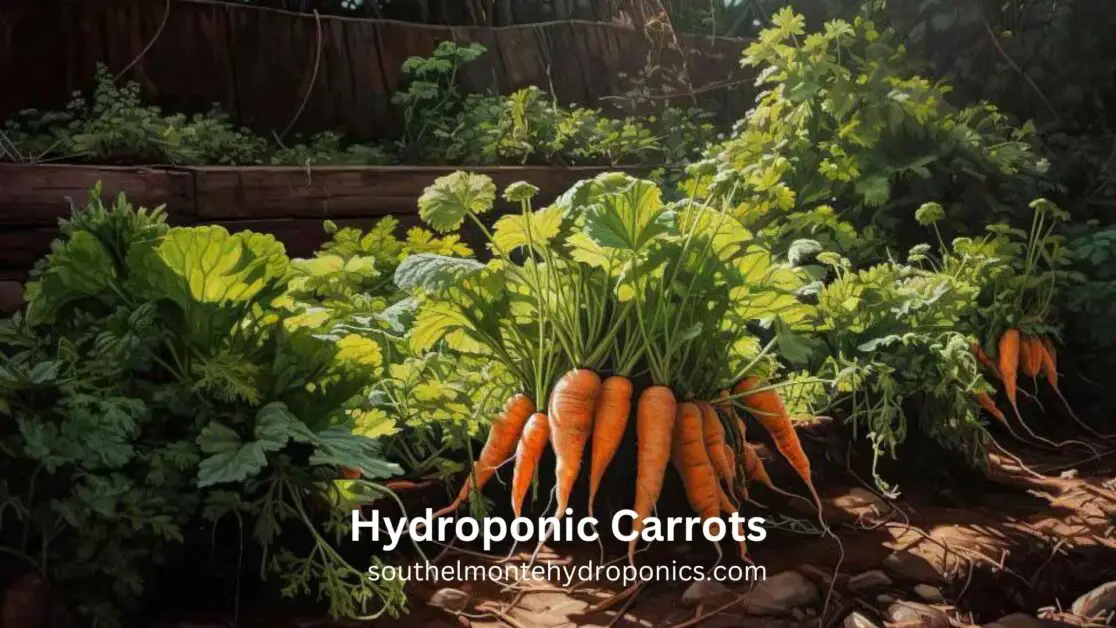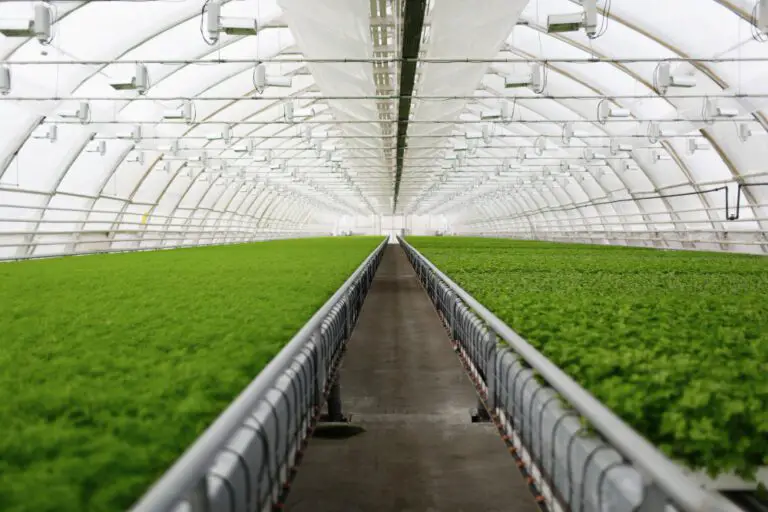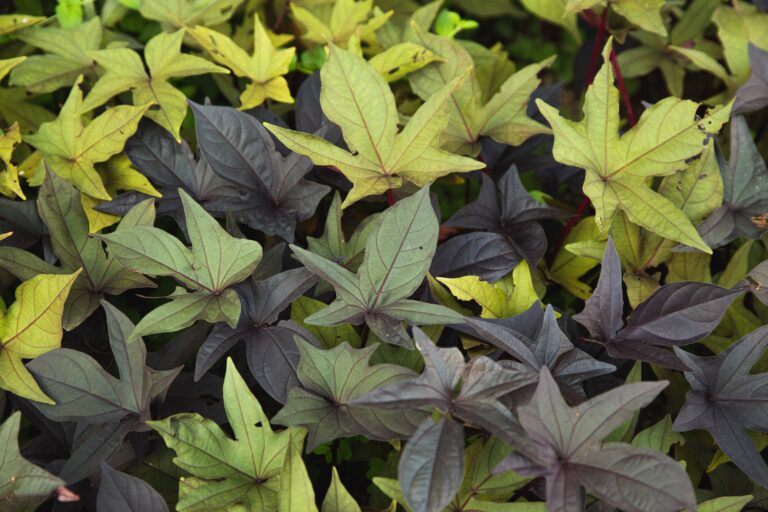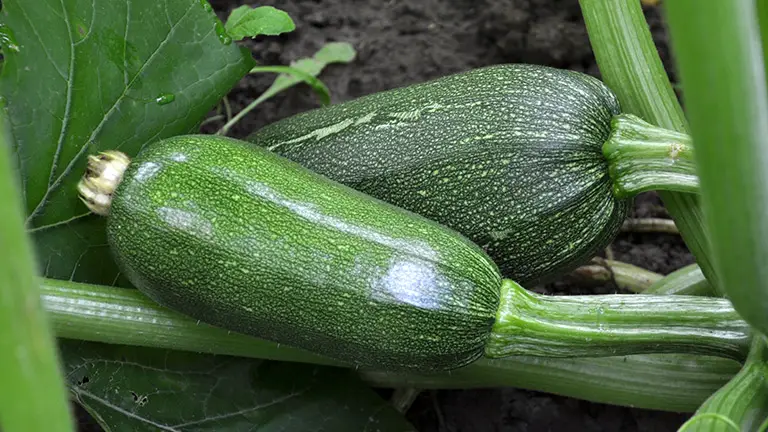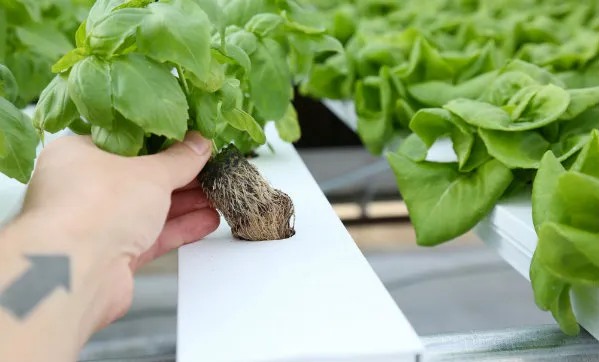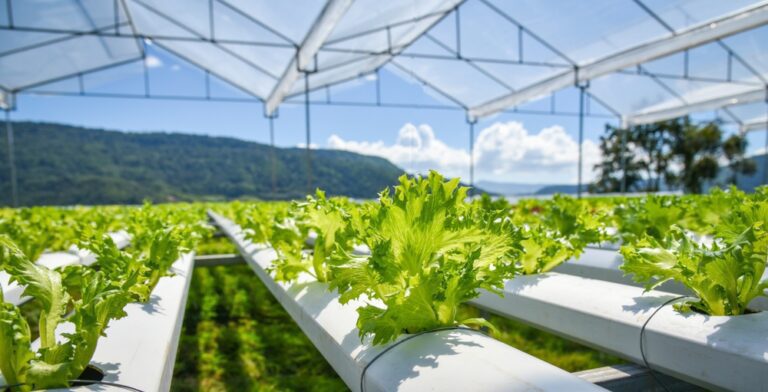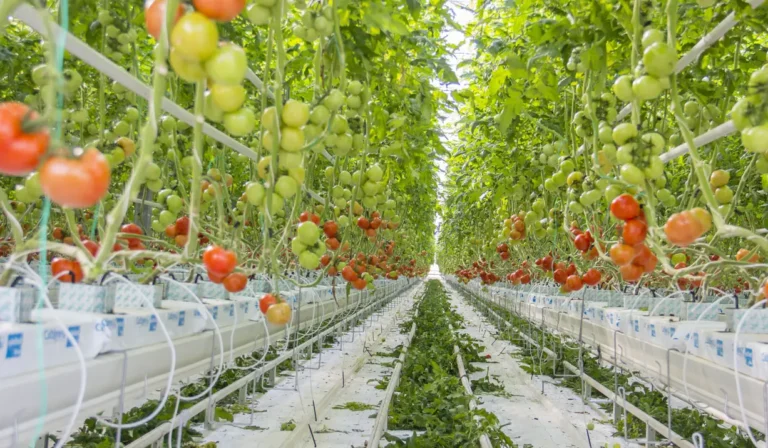Hydroponic Carrots: Best No.1 Way How to Grow Sweet and Crunchy Carrots in Hydroponics
Table of Contents
Understanding the Benefits of Hydroponic Cultivation for Carrots
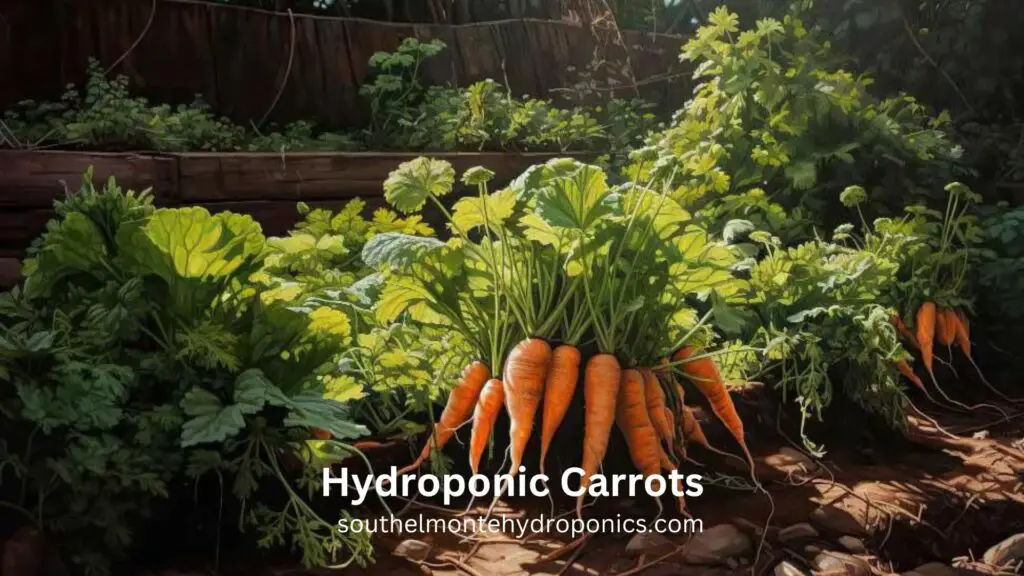
The benefits of hydroponic cultivation for carrots are numerous and significant. By opting for hydroponics, gardeners can overcome many challenges associated with traditional soil-based cultivation methods. One key benefit is the ability to control and optimize nutrient delivery. In a hydroponic system, carrots receive a nutrient solution directly to their roots, ensuring they have access to essential minerals and elements for optimal growth. This precise nutrient delivery promotes healthier plants, faster growth, and higher yields.
Furthermore, hydroponics eliminates the need for soil, reducing the risk of soil-borne diseases and pests that can harm carrot crops. This method also allows for more efficient space utilization as hydroponic systems can be set up vertically or in compact areas, maximizing the number of carrots that can be grown per square foot. Additionally, hydroponics eliminates the dependence on weather conditions, making it possible to grow carrots year-round in any climate. These benefits make hydroponic cultivation a promising option for both small-scale gardeners and commercial farmers seeking to enhance their crop production capabilities.
Selecting the Right Carrot Varieties for Hydroponic Carrots Growth
Selecting the right carrot varieties for hydroponic growth is crucial for achieving successful results in your cultivation. When choosing which carrot varieties to grow in a hydroponic system, it is important to consider several factors that will contribute to the overall success of your harvest.
Firstly, you’ll want to consider the size and shape of the carrots that you prefer. Carrot varieties come in different shapes and sizes, ranging from short and stubby to long and slender. Consider the desired market demand or personal preferences when selecting the size and shape of the carrots you want to grow hydroponically.
Furthermore, it is essential to choose carrot varieties that are well-suited for hydroponic cultivation. Look for carrot varieties that have been specifically bred for greenhouse or controlled environment agriculture settings. These varieties are often more adapted to the conditions found in hydroponic systems, such as limited space, optimized nutrient availability, and consistent temperature and humidity levels.
Another consideration when selecting carrot varieties for hydroponic growth is their growth characteristics. Some varieties may have faster growth rates, allowing you to harvest your carrots sooner. Others may have better root development, resulting in greater yields or improved quality. Evaluating these characteristics will help you choose the right carrot variety that aligns with your cultivation goals.
Ultimately, selecting the right carrot varieties for hydroponic growth requires careful consideration of size, shape, adaptability to hydroponics, and growth characteristics. By choosing varieties that meet these criteria, you can ensure a successful and bountiful harvest of hydroponically grown carrots.
Creating the Ideal Growing Environment for Hydroponic Carrots
Creating the ideal growing environment is crucial for successfully cultivating hydroponic carrots. By providing optimal conditions, you can maximize their growth and yield. One important factor to consider is temperature. Carrots prefer a temperature range of 50-70°F (10-21°C) for optimal growth. Consistency is key, so maintaining a stable temperature throughout the day and night is essential. Fluctuations can stress the plants and hinder their development.
Another vital aspect of the growing environment is humidity. Carrots thrive in moderate humidity levels between 50-70%. High humidity can increase the risk of diseases, while low humidity can cause the plants to dry out. To maintain an ideal humidity range, you can utilize methods such as misting or employing a humidifier. Additionally, proper air circulation is crucial to prevent the buildup of excess moisture and prevent fungal growth.
Lighting plays a pivotal role in hydroponic carrot cultivation. As photosynthetic organisms, carrots require sufficient light for their growth and development. Providing them with high-quality artificial lighting is necessary, especially when cultivating in an indoor setting. LED grow lights are a popular choice due to their energy efficiency and ability to produce the ideal light spectrum for plant growth. When using grow lights, it is important to position them at an appropriate distance from the plants to ensure optimal light absorption without causing heat stress.
Creating the perfect growing environment for hydroponic carrots involves carefully managing temperature, humidity, and lighting. By maintaining these factors within the optimal ranges, you can support healthy carrot growth and achieve bountiful yields. However, it is important to continually monitor and adjust these conditions based on the specific needs of your carrot cultivar and the stage of growth.
Choosing the Right System for Hydroponic Carrots Cultivation
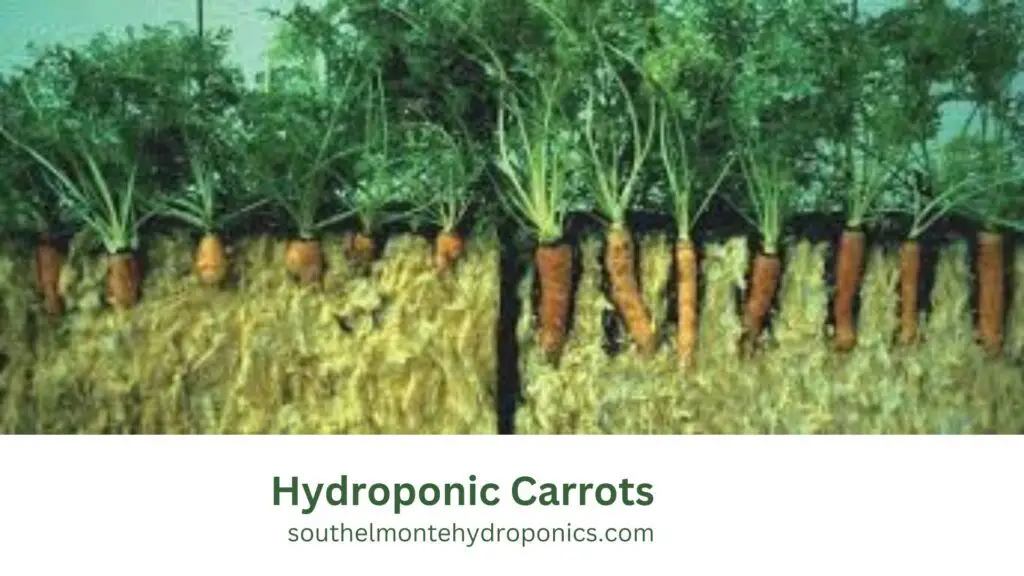
Hydroponic Carrots cultivation offers a wide range of benefits for growing carrots, including increased control over nutrient levels, water usage, and pest management. When it comes to choosing the right hydroponic system for carrot cultivation, there are several factors to consider.
First and foremost, consider the size and scale of your operation. If you’re a beginner or have limited space, a simple and compact system like a deep-water culture or a nutrient film technique may be suitable. These systems are easy to set up and manage, making them ideal for small-scale carrot production. On the other hand, if you have a larger operation and want to maximize your yield, a vertical or vertical tower system can efficiently utilize space and provide optimal growing conditions for your carrots.
Secondly, think about the type of substrate you want to use. While hydroponic systems typically use an inert medium like perlite or rockwool, some growers prefer organic substrates for a more sustainable approach. Coconut coir or peat moss, for example, can be used as alternatives, but keep in mind that they may require additional management and monitoring for maintaining optimal moisture levels.
Lastly, consider the nutrient delivery system. The most common method is the nutrient film technique, where a thin film of nutrient solution flows continuously over the root zone. This system ensures that the plants receive a constant supply of nutrients and oxygen. However, if you prefer a more hands-off approach, an ebb and flow system, also known as a flood and drain system, can work well for carrots. This system periodically floods the root zone with nutrient solution and then allows it to drain away, creating a cycle that mimics natural irrigation and drainage patterns.
In conclusion, choosing the right hydroponic system for carrot cultivation depends on factors such as the scale of your operation, the type of substrate you prefer, and your preferred method of nutrient delivery. By considering these factors and evaluating your specific needs and goals, you can select a system that will provide optimal growing conditions for your hydroponic carrots.
Preparing the Nutrient Solution for Optimal Carrot Growth: Hydroponic Carrots
Preparing the nutrient solution for optimal carrot growth is a crucial step in ensuring the success of your hydroponic carrot cultivation. Carrots require specific nutrients in order to develop healthy roots and produce high-quality crops. By providing the right balance of essential elements, you can promote vigorous growth and enhance the nutritional value of your carrots.
The nutrient solution for hydroponic carrots should contain a careful blend of macronutrients and micronutrients. Macronutrients, such as nitrogen (N), phosphorus (P), and potassium (K), play a key role in supporting overall plant growth and development. These elements are involved in various metabolic processes, including photosynthesis, root formation, and the production of sugars and starches. Micronutrients, on the other hand, are equally important in smaller quantities. These include elements like iron (Fe), manganese (Mn), zinc (Zn), copper (Cu), and boron (B), which are essential for various enzymatic and biochemical reactions.
When preparing your nutrient solution, it is essential to accurately measure and mix the required quantity of each nutrient component. This can be achieved by using soluble hydroponic fertilizers specifically formulated for carrots or by following a nutrient recipe tailored to the needs of carrot plants. It is important to ensure that the nutrient solution is well-balanced, providing all the necessary nutrients while avoiding excesses or deficiencies. Regular monitoring of pH levels and nutrient concentrations is crucial to maintain an optimal growing environment for your hydroponic carrots.
Planting Seeds in Hydroponic Carrots Systems
When planting carrot seeds in hydroponic systems, it is important to ensure that the seeds are given the proper conditions to germinate and thrive. Carrots are typically grown from seeds, and in a hydroponic system, these seeds can be sown directly into a growing medium or a specialized medium such as Rockwool cubes.
Before planting carrot seeds, it is important to ensure that they are of good quality and have been properly stored. High-quality seeds significantly improve the chances of successful germination and healthy growth. It is recommended to choose certified organic or untreated seeds to avoid any potential negative effects of chemical treatments on the plants. Additionally, check the seed packet for the recommended planting depth and spacing as this can vary slightly among different carrot varieties. By following the guidelines provided on the packet, you can ensure that the seeds are sown at the appropriate depth and distance, optimizing their chances of producing healthy and full-sized carrots.
Providing Adequate Lighting for Healthy Hydroponic Carrots Development
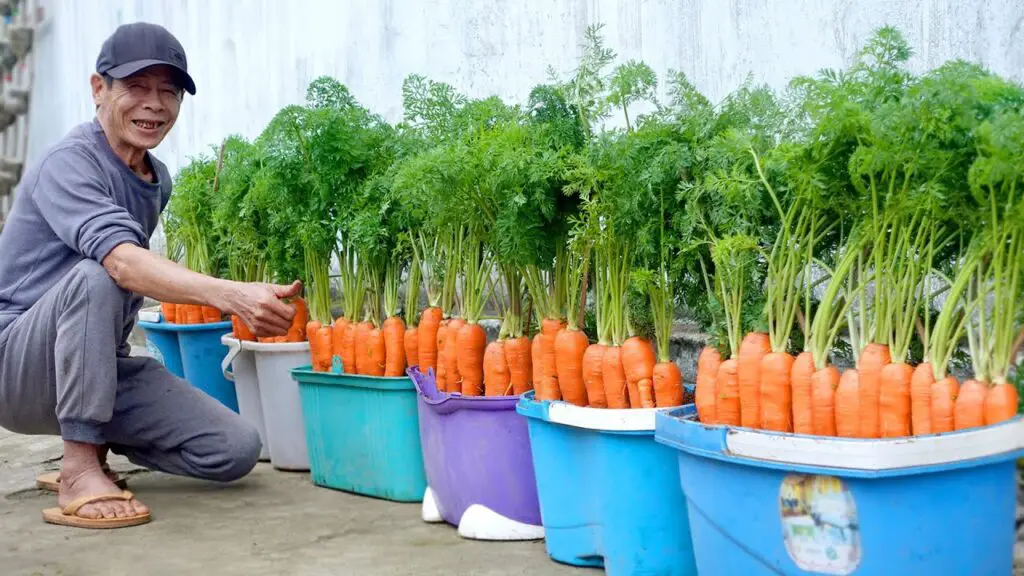
Providing adequate lighting is crucial for the healthy development of carrots in a hydroponic system. Carrots require a sufficient amount of light to go through the process of photosynthesis, which is essential for their growth and the production of vibrant, nutritious roots.
In a hydroponic setup, it is recommended to use artificial lighting to ensure consistent and optimal light conditions for carrot plants. LED grow lights are widely used in hydroponics due to their energy efficiency and ability to emit the right spectrum of light for plant growth. These lights provide a balanced distribution of red and blue wavelengths, which are vital for photosynthesis. Moreover, LED lights produce very little heat, reducing the risk of plant damage from excessive temperature.
When it comes to lighting duration, carrot plants typically require around 14 to 16 hours of light per day during their vegetative stage. As they transition into the flowering stage, it is advisable to reduce the lighting period to 10-12 hours to mimic the natural sunlight cycle.
Proper positioning of the lights is also important. Keep them at a distance of about 12 to 18 inches above the plants to avoid any light burn or stunted growth caused by excessive light intensity. Regularly monitor the plants for signs of stress or inadequate lighting, such as elongated or spindly growth, and adjust the lights accordingly.
In conclusion, providing adequate lighting in a hydroponic system is essential for healthy carrot development. LED grow lights, with their optimal light spectrum and energy efficiency, are a popular choice for carrot cultivation. By ensuring the right lighting duration, positioning, and intensity, gardeners can promote vigorous growth and vibrant root development in their hydroponically grown carrots.
Monitoring and Maintaining Proper pH Levels in Hydroponic Carrot Systems
Maintaining proper pH levels in hydroponic carrot systems is crucial for the successful growth and development of your plants. Carrots thrive in a slightly acidic to neutral pH range of 5.8 to 6.5. Deviating too far from this range can have negative effects on nutrient uptake and overall plant health.
Regular monitoring of pH levels is essential to ensure that your hydroponic setup maintains optimal conditions for carrot growth. A simple pH meter or testing kit can be used to check the acidity or alkalinity of the nutrient solution. It is advisable to perform pH checks at least once a week or more frequently if necessary.
If the pH levels deviate from the desired range, adjustments must be made accordingly. To increase acidity, citric acid or phosphoric acid can be added to the nutrient solution. On the other hand, if the pH is too low, adding potassium hydroxide or bicarbonate can help raise the alkalinity. It’s important to make gradual adjustments and recheck the pH after each addition to prevent drastic fluctuations.
Maintaining proper pH levels not only ensures optimal nutrient uptake but also helps prevent nutrient deficiencies and imbalances. By taking diligent care in monitoring and adjusting pH levels, you can create a favorable environment for your hydroponic carrots to thrive and produce a bountiful harvest.
Managing Temperature and Humidity for Successful Carrot Growth
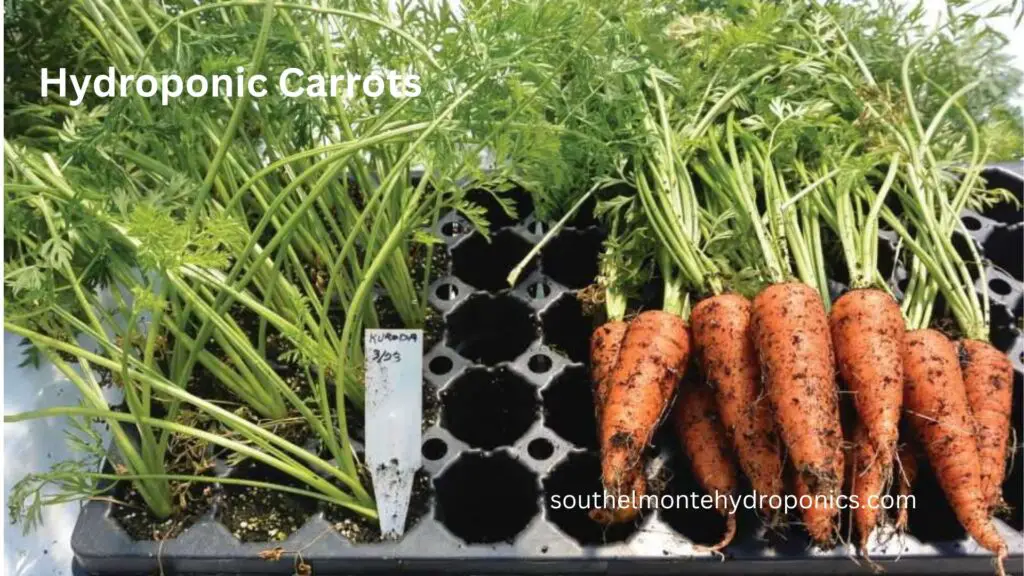
Maintaining proper temperature and humidity levels in a hydroponic system is crucial for the successful growth of carrots. Carrots thrive in cooler temperatures, ideally between 60 and 70 degrees Fahrenheit (15-21 degrees Celsius). Exposing them to temperatures outside this range can inhibit their growth and lead to stunted or deformed carrots.
To control the temperature, it is essential to monitor the ambient temperature in your growing area regularly. Using a thermometer can help you ensure that the temperature remains within the optimal range. You may consider using fans, air conditioning, or heaters to maintain the desired temperature, depending on the climate in your region.
In addition to temperature, humidity also plays a significant role in the growth of carrot plants. Carrots prefer humidity levels ranging from 50% to 70%. High humidity can lead to fungal diseases, particularly during the early stages of growth, so it is crucial to maintain adequate airflow in your hydroponic system. This can be achieved through the use of fans or ventilation systems that circulate air and prevent excess moisture buildup. By carefully managing temperature and humidity, you can create an ideal growing environment for your hydroponic carrots, ensuring healthy and robust plant development.
Pruning and Thinning Carrot Plants for Maximum Yields: Hydroponic Carrots
Pruning and thinning carrot plants is an essential practice in hydroponic cultivation to ensure maximum yields. By removing excess foliage and spacing out the plants, gardeners can optimize the growth and development of their carrots.
When it comes to pruning carrot plants, it is important to identify and remove any dead or diseased leaves. These leaves not only hinder the overall health of the plant but also attract pests and diseases. By promptly pruning them, we can prevent the spread of infections and maintain the vigor of the plants. Additionally, removing any yellow or damaged leaves allows the plant to focus its energy on producing healthy and robust carrots.
Thinning, on the other hand, involves the selective removal of some carrot plants to provide adequate space for the remaining ones to grow. Overcrowding can lead to stunted growth and misshapen carrots, as the plants compete for limited resources. By thinning the plants, we allow each carrot to have ample nutrients, water, and light, resulting in larger and more uniform yields. It is recommended to thin the plants when they are around 2-3 inches tall, spacing them approximately 2 inches apart.
Preventing and Managing Common Pests and Diseases in Hydroponic Carrots
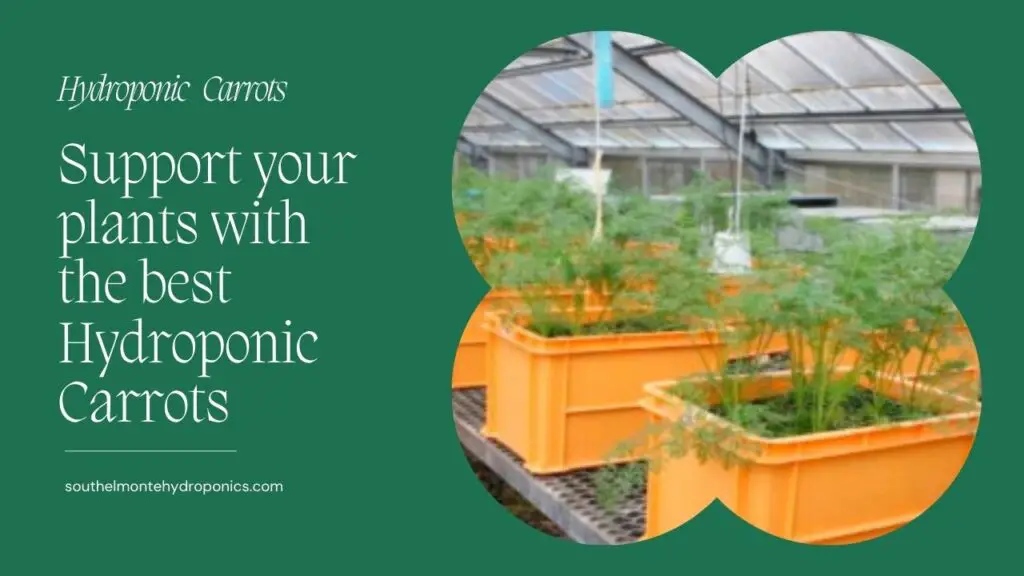
Common pests and diseases can pose a significant threat to the health and productivity of hydroponic carrot crops. One of the most common pests encountered in hydroponic carrot systems is aphids. These tiny insects can quickly infest your plants and cause significant damage by sucking the sap from the leaves and stems. To prevent and manage aphid infestations, it is important to regularly inspect your plants and promptly remove any affected individuals. Additionally, implementing biological control methods such as introducing natural predators like ladybugs can help keep aphid populations in check.
Another common issue in hydroponic carrot cultivation is the development of fungal diseases, particularly powdery mildew. This fungal infection can hinder plant growth and decrease overall yields if left untreated. To prevent powdery mildew, it is crucial to maintain proper air circulation and humidity levels in the growing environment. Ensuring adequate spacing between plants can help improve ventilation and reduce the chances of disease transmission. In addition, applying organic fungicides containing neem oil or copper-based compounds can help control and manage powdery mildew outbreaks effectively. Regularly monitoring your plants for any signs of disease and taking immediate action can go a long way in preventing and minimizing the impact of such threats in your hydroponic carrot crops.
Here’s a table outlining key aspects of hydroponic carrot cultivation:
| Aspect | Description |
|---|---|
| Carrot Variety | Select Suitable Varieties: Choose carrot varieties suitable for hydroponic cultivation, such as Nantes or Chantenay. |
| Hydroponic System | System Type: Suitable systems include nutrient film technique (NFT), deep water culture (DWC), or vertical towers. |
| Growing Medium | Hydroponic Medium: Use inert mediums like perlite, coconut coir, or hydroponic rockwool for proper support and aeration. |
| Nutrient Solution | Formulate Nutrient Solution: Develop a balanced nutrient solution with essential macro and micronutrients for carrots. |
| pH Range | Maintain pH: Keep the pH level in the range of 6.0 to 6.5 for optimal nutrient absorption by carrot plants. |
| Temperature | Optimal Temperature: Carrots prefer temperatures between 60-75°F (15-24°C). Provide a suitable climate for healthy growth. |
| Lighting Requirements | Lighting Duration: Carrots benefit from 12-16 hours of light per day. Supplemental lighting may be required in low-light conditions. |
| Plant Spacing and Density | Spacing Guidelines: Follow recommended spacing based on the carrot variety to prevent overcrowding and encourage root development. |
| Seed Germination and Transplanting | Germination Medium: Start seeds in a germination medium, such as rockwool cubes, before transplanting seedlings into the hydroponic system. |
| Root System Considerations | Deep Reservoirs: Provide deep nutrient reservoirs to accommodate carrot taproots, ensuring sufficient space for proper growth. |
| Watering Technique | Avoid Overwatering: Ensure proper drainage to prevent waterlogging, as overwatering can lead to root issues with carrots. |
| Support for Carrot Tops | Vertical Support: Consider using netting or vertical supports to prevent carrot tops from bending and ensure straight growth. |
| Harvesting | Monitor Growth: Harvest carrots when they reach the desired size. Hydroponically grown carrots may mature faster than in traditional soil. |
| Nutrient Adjustments | Monitor Nutrient Levels: Regularly check nutrient levels and adjust the solution based on the growth stage of the carrots. |
| Pest and Disease Management | Preventive Measures: Implement preventive measures, as hydroponic systems can minimize some pests but may still be susceptible to diseases. |
| Varietal-Specific Tips | Research Variety Traits: Different carrot varieties may have specific requirements. Research and adapt your hydroponic system accordingly. |
| Harvest Frequency | Continuous Harvesting: Carrots can be harvested gradually as they reach maturity, allowing for a continuous harvest over time. |
Hydroponic carrot cultivation requires attention to factors such as spacing, lighting, and nutrient management to ensure healthy growth and desirable root development. Adjustments may be needed based on the specific needs of the carrot variety chosen.
Harvesting and Storing Hydroponically Grown Carrots
The process of harvesting and storing hydroponically grown carrots requires precision and attention to detail to ensure the highest quality and freshness of the produce. When it comes to harvesting, it is important to consider the maturity of the carrots. Carrots are typically ready for harvest when they reach their full size and develop a deep, vibrant color. It is crucial to avoid harvesting too early, as immature carrots may lack sweetness and have a woody texture. On the other hand, over-mature carrots tend to become pithy and less flavorful.
To harvest hydroponically grown carrots, gently grasp the green tops near the base and gently pull up while supporting the carrot with your other hand to prevent damage. It is important to handle the carrots with care to prevent bruising or breaking the skin, as this can reduce the shelf life and overall quality of the produce. Once harvested, remove any excess soil or debris by rinsing them with cool water. It is best to store the carrots with their tops removed, as the greens draw moisture from the carrot and can cause them to wilt prematurely.
Tips and Tricks for Growing Sweet and Crunchy Hydroponic Carrots

Achieving sweet and crunchy hydroponic carrots requires attention to detail and a few key tips and tricks. First and foremost, selecting the right carrot varieties is crucial. Look for varieties known for their sweetness and crispness, such as Sugarsnax 54 or Napoli. These varieties have been specifically bred for their desirable traits in hydroponic conditions.
When it comes to creating the ideal growing environment, temperature and humidity play a significant role. Aim for a temperature range of 60-70°F (15-21°C) during the day and slightly cooler temperatures at night. Additionally, maintaining a relative humidity level between 50-70% can help prevent issues like wilting or disease.
Proper nutrient solution preparation is another vital aspect of growing top-quality carrots. Carrots require a well-balanced mix of nutrients to thrive. Consider using a hydroponic nutrient solution formulated specifically for root vegetables. It’s important to adhere to the manufacturer’s instructions and regularly monitor and adjust the solution’s pH levels to ensure optimal nutrient uptake.
To encourage healthy carrot development, providing adequate lighting is crucial. Carrots need approximately 12-16 hours of light each day. Utilize high-quality LED grow lights with a color temperature of around 6,500K to simulate natural sunlight. Ensure the lights are positioned at the correct distance from the plants to avoid excessive heat or light stress.
Mastering these tips and tricks will help you cultivate hydroponic carrots that are bursting with flavor and texture. By selecting the right varieties, creating optimal growing conditions, preparing a balanced nutrient solution, and providing adequate lighting, you’ll be well on your way to enjoying a bountiful harvest of sweet and crunchy carrots.
What are the benefits of growing Hydroponic Carrots?
Hydroponic cultivation for carrots offers several benefits, including faster growth rates, higher yields, and reduced water usage compared to traditional soil-based methods. Additionally, it allows for year-round cultivation and eliminates the risk of soil-borne diseases.
How do I choose the right carrot varieties for hydroponic growth?
When selecting carrot varieties for hydroponic growth, it is important to choose those that have a shorter maturity period and are suitable for indoor cultivation. Some popular choices include Chantenay, Nantes, and Paris Market varieties.
What is the ideal growing environment for hydroponic carrots?
Hydroponic carrots thrive in a controlled environment with temperatures ranging between 60-75°F (15-24°C) and relative humidity levels around 50-70%. It is important to provide adequate ventilation and air circulation to prevent the buildup of excess humidity.
Which system is best for growing Hydroponic Carrots?
For growing carrots hydroponically, a nutrient film technique (NFT) system or a deep water culture (DWC) system are commonly used. These systems allow for easy nutrient distribution and root oxygenation, which are essential for healthy carrot growth.
How do I prepare the nutrient solution for optimal carrot growth?
The nutrient solution for hydroponic carrots should contain a balanced mix of essential macro and micronutrients. It is recommended to use a commercially available hydroponic nutrient solution specifically formulated for leafy vegetables, adjusting the pH as needed.
How do I plant carrot seeds in a hydroponic system?
Carrot seeds can be planted directly into growing media such as rockwool cubes or coconut coir. Make sure to plant them at the appropriate depth, usually around 1/4 inch (0.6 cm), and provide consistent moisture for germination.
How can I provide adequate lighting for healthy carrot development?
Carrots require at least 12-14 hours of bright, full-spectrum light for optimal growth. LED grow lights are a popular choice for providing the necessary light intensity and spectrum for indoor hydroponic systems.
How do I monitor and maintain proper pH levels in hydroponic carrot systems?
Regularly test the pH of the nutrient solution using a pH meter or test kit. The ideal pH range for hydroponic carrots is typically between 5.5 and 6.5. Adjust the pH as necessary using pH up or pH down solutions.
How do I manage temperature and humidity for successful carrot growth?
Maintain a stable temperature within the recommended range of 60-75°F (15-24°C) and control humidity levels between 50-70%. Use fans or ventilation systems to regulate airflow and prevent excessive humidity buildup.
Should I prune and thin carrot plants for maximum yields?
Yes, pruning and thinning carrot plants promote better air circulation and prevent overcrowding, which can lead to stunted growth. Remove any damaged or diseased leaves and thin out overcrowded seedlings to allow room for healthy root development.
How can I prevent and manage common pests and diseases in hydroponic carrots?
Implementing good hygiene practices, such as regularly cleaning and disinfecting the hydroponic system, can help prevent pests and diseases. Additionally, using biological controls, such as beneficial insects or organic pesticides, can be effective in managing pests in a hydroponic setting.
How do I harvest and store hydroponically grown carrots?
Harvest carrots when they have reached the desired size, usually around 1 inch (2.5 cm) in diameter. Gently pull them from the growing media, carefully brushing off any excess dirt or growing medium. Store harvested carrots in a cool, dark place or refrigerate them to maintain freshness and extend their shelf life.

